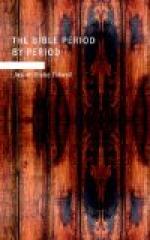The Tower of Babel. The place of this tower is in the land of Shinat, which is the name given by the early Hebrews to the land of Babylonia (Gen. 10:10; 14:19; Is. 11:1; Dan. 1:2; Zech. 5:11). This plain of Shinar had become the center of the earth’s population. They threw up with infinite toil great mounds, which still stand as monuments of human achievement. Many such mounds and ruins, any of which would have seemed lofty in contrast with the level plain of Babylon, may be seen by the traveler.
The exact location of this tower cannot be determined with certainty, but it has been thought by some that a great mound on the east of the Euphrates, which probably represents the remains of the great temple of Marduk with its huge pyramid-like foundation, was the site of this tower. On the west of the Euphrates, however, is a vast mound called Birs Nimrood, which used to be regarded as the ruins of the Tower of Babel. The fact that it early gave the impression of incompleteness favors this claim. Nebuchadnezzar says on a tablet that another king began it but left it unfinished. It fell into disrepair and was completed by Nebuchadnezzar and was used as one of the great temples. It was built of brick and was oblong in form. It measured seven hundred yards around and rose to a height of from one hundred and fifty to two hundred feet high. It consisted o? seven stages or stories colored to represent the tints which the Sabeans thought appropriate to the seven planets. Beginning from the bottom they were black, orange, bright red, golden, pale yellow, dark blue and silver, representing respectively the colors of Saturn, Jupiter, Mars, the Sun, Venus. Mercury, and the Moon. These marks may indicate the prevalence of idolatry and have led some to think the tower of Babel was intended to do honor to the gods of Babylonia.
The specific purpose of this tower is difficult to determine. Josephus says the object was to save the people in case of another flood. The scripture record (11:4) indicates that they were moved by an unholy pride and selfish desire to make for themselves a great name. It also was intended to become a sort of rallying-point which would keep the people together and prevent the destruction of their glory which they thought would result from their separation. In 11:6 God says “nothing will be restrained from them which they have imagined to do.” In this there is an implication that they are at cross purposes with God. It was an act that defied God and showed the need of punishment. It is not unlikely that idolatry had begun to prevail and that the tower was built in honor of those false Gods whom men were disposed to trust.
The incompleteness of the tower is attributed to divine intervention. Hitherto all the descendants of Noah had spoken the same language, but now by a direct divine interposition they are caused to speak several, and then separated so they can no longer cooperate with each other in carrying out their plans which had so displeased God. The different languages then are regarded as a punishment of the race which had rebelled against God.




